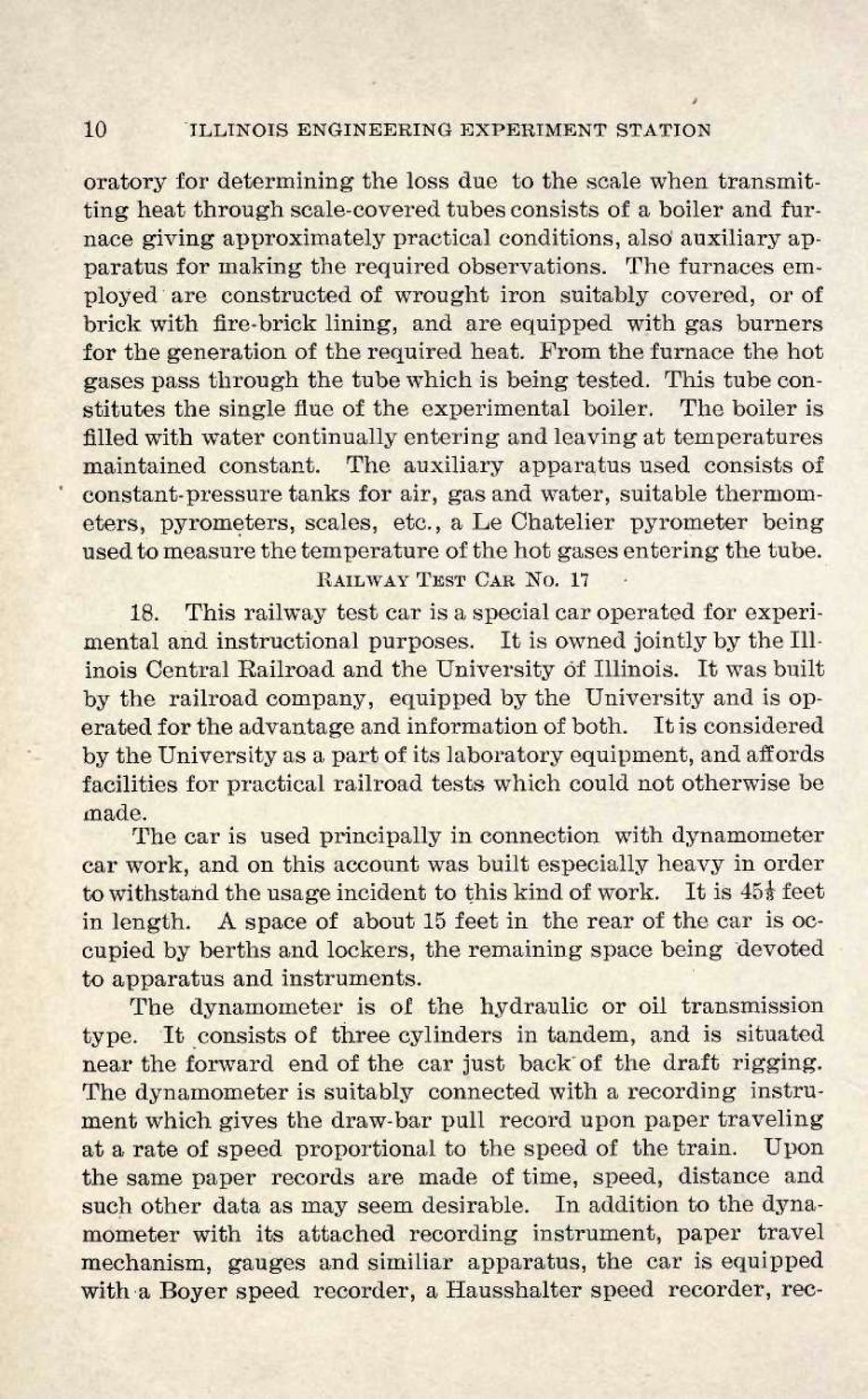| |
| |
Caption: Book - First Years of Engineering Experiment Station (1906)
This is a reduced-resolution page image for fast online browsing.

EXTRACTED TEXT FROM PAGE:
10 "ILLINOIS ENGINEERING EXPERIMENT STATION oratory for determining the loss due to the scale when transmitting heat t h r o u g h scale-covered tubes consists of a boiler and furnace giving approximately practical conditions, also" auxiliary apparatus for making the required observations. The furnaces employed are constructed of wrought iron suitably covered, or of brick with fire-brick lining, and are equipped with gas burners for the generation of the required heat. F r o m the furnace the hot gases pass t h r o u g h the tube which is being tested. This tube constitutes the single flue of the experimental boiler. T h e boiler is filled with water continually entering and leaving at temperatures maintained constant. T h e auxiliary apparatus used consists of constant-pressure tanks for air, gas and water, suitable thermometers, pyrometers, scales, etc., a L e Chatelier pyrometer being used to measure the temperature of the hot gases entering the tube. R A I L W A Y T E S T CAR N O . 17 18. This railway test car is a special car operated for experimental and instructional purposes. I t is owned jointly by the Illinois Central Railroad and the University of Illinois. I t was built by the railroad company, equipped by the University and is operated for t h e advantage and information of both. I t is considered by the University as a p a r t of its laboratory equipment, and affords facilities for practical railroad t e s t s which could not otherwise be made. T h e car is used principally in connection with dynamometer car work, and on this account was built especially heavy in order to withstand the usage incident to this kind of work. I t is 45i feet in length. A space of about 15 feet in t h e r e a r of the car is occupied by berths and lockers, the remaining space being devoted to apparatus and instruments. T h e dynamometer is of t h e hydraulic or oil transmission type. I t consists of three cylinders in tandem, and is situated near the forward end of t h e car just back" of t h e draft rigging. The dynamometer is suitably connected with a recording instrument which gives the draw-bar pull record upon paper t r a v e l i n g at a r a t e of speed proportional to the speed of the train. Upon the same paper records are made of time, speed, distance and such other data as may seem desirable. I n addition to the dynamometer with its attached recording instrument, paper travel mechanism, gauges and similiar apparatus, the car is equipped with a Boyer speed recorder, a Hausshalter speed recorder, rec-
| |